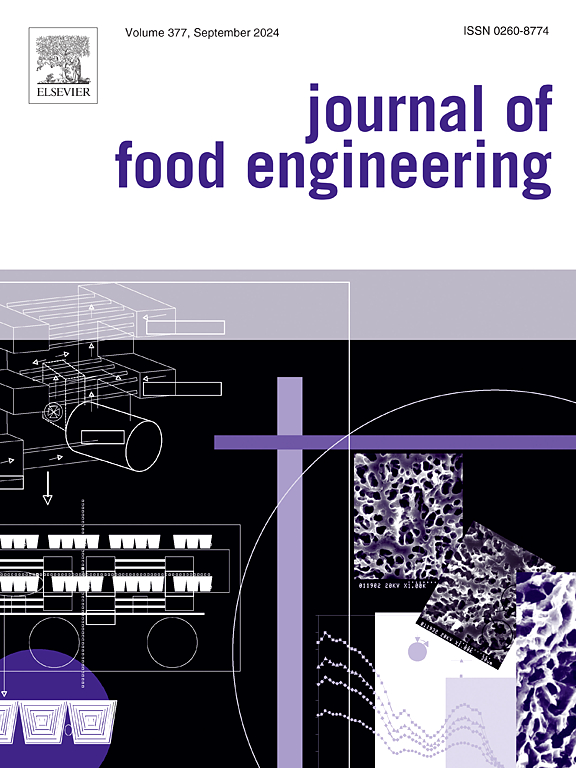非对称双螺杆挤出机中粘弹性液滴的破碎
IF 5.8
2区 农林科学
Q1 ENGINEERING, CHEMICAL
引用次数: 0
摘要
本研究介绍了一种非对称双螺杆挤出机(ATSE),该挤出机在其中一个螺杆通道中插入内部挡板以增强分散混合。开发了一个可视化实验原型,利用移动的透明薄膜收集示踪液滴进行进一步分析。羧甲基纤维素钠(CMC-Na)水溶液作为基质液,红色油基油墨作为示踪剂。实验结果揭示了三种主要的液滴破碎模式:(1)在螺筒间隙强剪切作用下的大规模破碎;(2)不对称扰动导致液滴破裂后形成拖尾;(3)小尺度破裂主要由毛细不稳定引起。重要的是,挡板高度显著影响液滴的破碎行为。虽然较小的挡板高度产生了强大的剪切力,但它减少了大液滴穿透螺钉和桶之间间隙的机会,导致最终液滴尺寸更大。此外,粘度比的增加通常会使液滴破碎更具挑战性。然而,在ATSE中,独特的延伸流场特征和由于“回流”而延长的停留时间积极地促进了液滴的破碎。本文章由计算机程序翻译,如有差异,请以英文原文为准。
Breakup of viscoelastic droplets in an asymmetric twin-screw extruder
This study introduces an asymmetric twin-screw extruder (ATSE) featuring an internal baffle was inserted in one of the screw channels to enhance dispersive mixing. A visualization experimental prototype was developed, utilizing a moving transparent thin film to collect tracer droplets for further analysis. An aqueous solution of sodium carboxymethyl cellulose (CMC-Na) served as the matrix fluid, while a red oil-based ink acted as the tracer. The experimental results revealed three primary droplet breakup modes: (1) large-scale breakup driven by strong shear in the screw-barrel gap; (2) formation of drag tails followed by droplet breakup due to asymmetric perturbations; and (3) small-scale breakup primarily attributed to capillary instability. Importantly, the baffle height significantly influenced droplet breakup behavior. Although a smaller baffle height created strong shear, it reduced the opportunities for large droplets to penetrate the gap between the screws and the barrel, resulting in larger final droplet sizes. In addition, an increased viscosity ratio typically makes droplet breakup more challenging. However, in ATSE, the unique characteristics of elongation flow field and prolonged residence time due to 'backflow' actively facilitate droplet breakup.
求助全文
通过发布文献求助,成功后即可免费获取论文全文。
去求助
来源期刊

Journal of Food Engineering
工程技术-工程:化工
CiteScore
11.80
自引率
5.50%
发文量
275
审稿时长
24 days
期刊介绍:
The journal publishes original research and review papers on any subject at the interface between food and engineering, particularly those of relevance to industry, including:
Engineering properties of foods, food physics and physical chemistry; processing, measurement, control, packaging, storage and distribution; engineering aspects of the design and production of novel foods and of food service and catering; design and operation of food processes, plant and equipment; economics of food engineering, including the economics of alternative processes.
Accounts of food engineering achievements are of particular value.
 求助内容:
求助内容: 应助结果提醒方式:
应助结果提醒方式:


